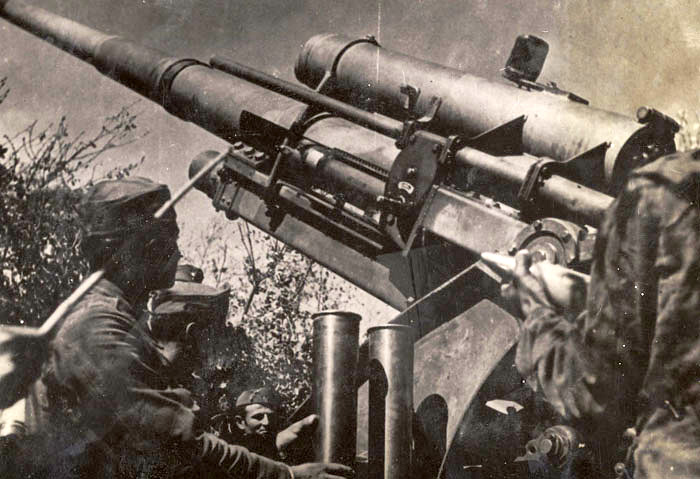
| Year | 1936-1938 |
| Weapon Type | Heavy Anti-Aircraft Gun |
| Origin & Designer | Germany/Krupp |
| Numbers Produced | 24 |
| Crew | 8 |
| Calibre | 88mm (88x571) |
| Elevation | -3° to +85° |
| Traverse | 360° |
| Breech | Semi-Automatic Sliding Breech |
| Recoil | Hydropeumatic |
| Gun Sight | [@gun_sight] |
| Gun Mount | Pivoted Cruciform Platform |
| Carriage | 2 x Ad. Anh. 201 |
| Trailers | [@trailers] |
| Gun Shield | [@gun_shield] |
| Armoured Plate | [@armoured_plate] |
| Barrel Length | 4.930mm (L/56) |
| Overall Length | 7.62m |
| Width | 2.30m |
| Height | 2.41m |
| Weight | Weight in Action: 5000 kg Weight in Transport; 7.400 kg |
| Round Weight | 9.4 kg |
| Muzzle Velocity | 820 m/s |
| Feed | [@feed] |
| Magazine Capacity | [@magazine_capacity] |
| Practical Rate of Fire | [@practical_rate_of_fire] |
| Rate of Fire | 15 r.p.m. |
| Maximum Rate of Fire | [@maximum_rate_of_fire] |
| Maximum Ceiling | 9.900m |
| Maximum Ground Range | 14.680m |
| Maximum Range | [@maximum_range] |
| Armour Penetration | [@armour_penetration] |
| Traction | Motorized (Pavesi P4) |
| Variants | [@variants] |
| Notes | The Krupp 88mm flak gun was considered as one of the best anti-aircraft guns ever built and was used extensively by the German army. In mid-1930 the Greek military purchased 39 of these weapons and the army acquired 24 of these. They were issued to six heavy anti-aircraft batteries, with each containing four guns. |